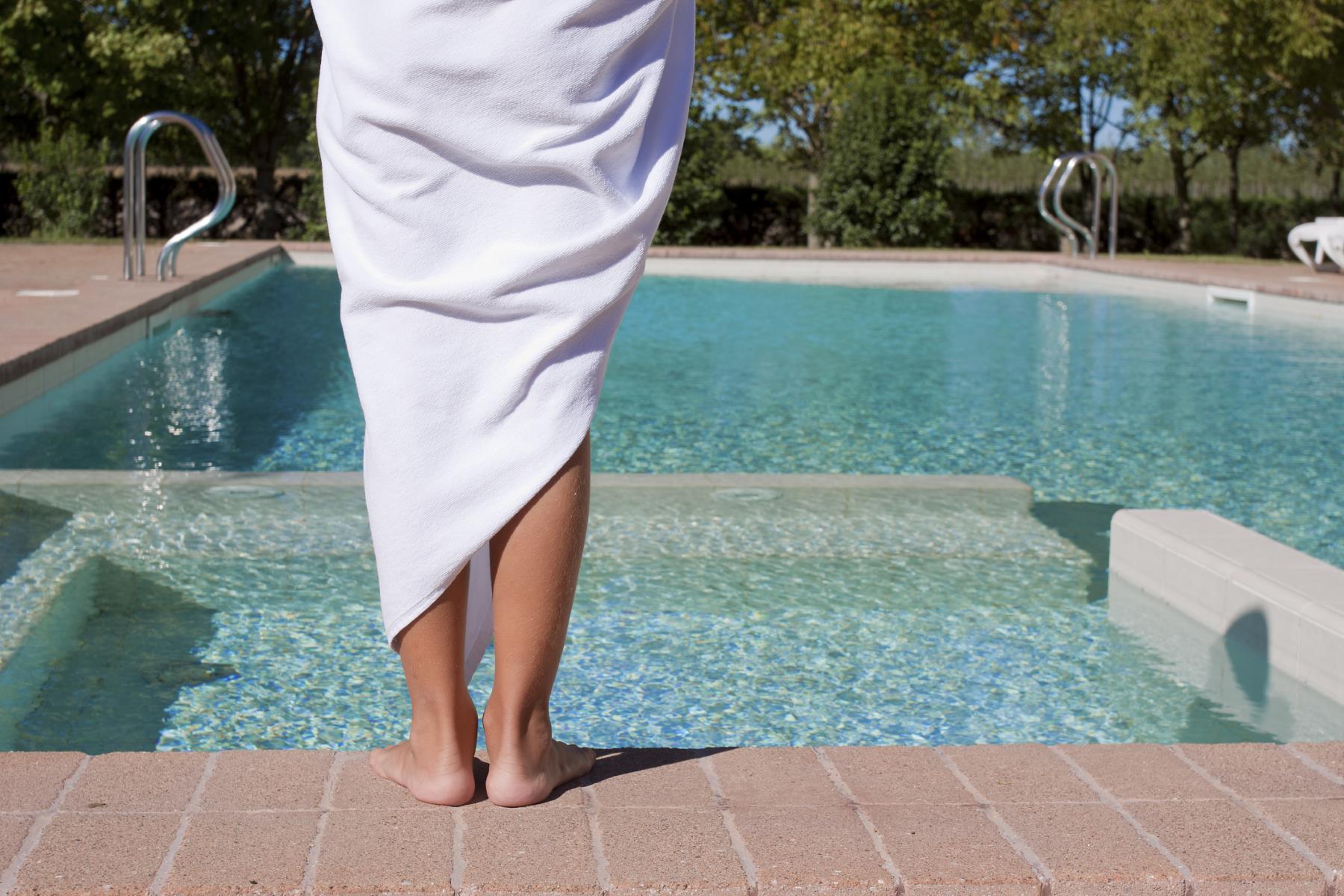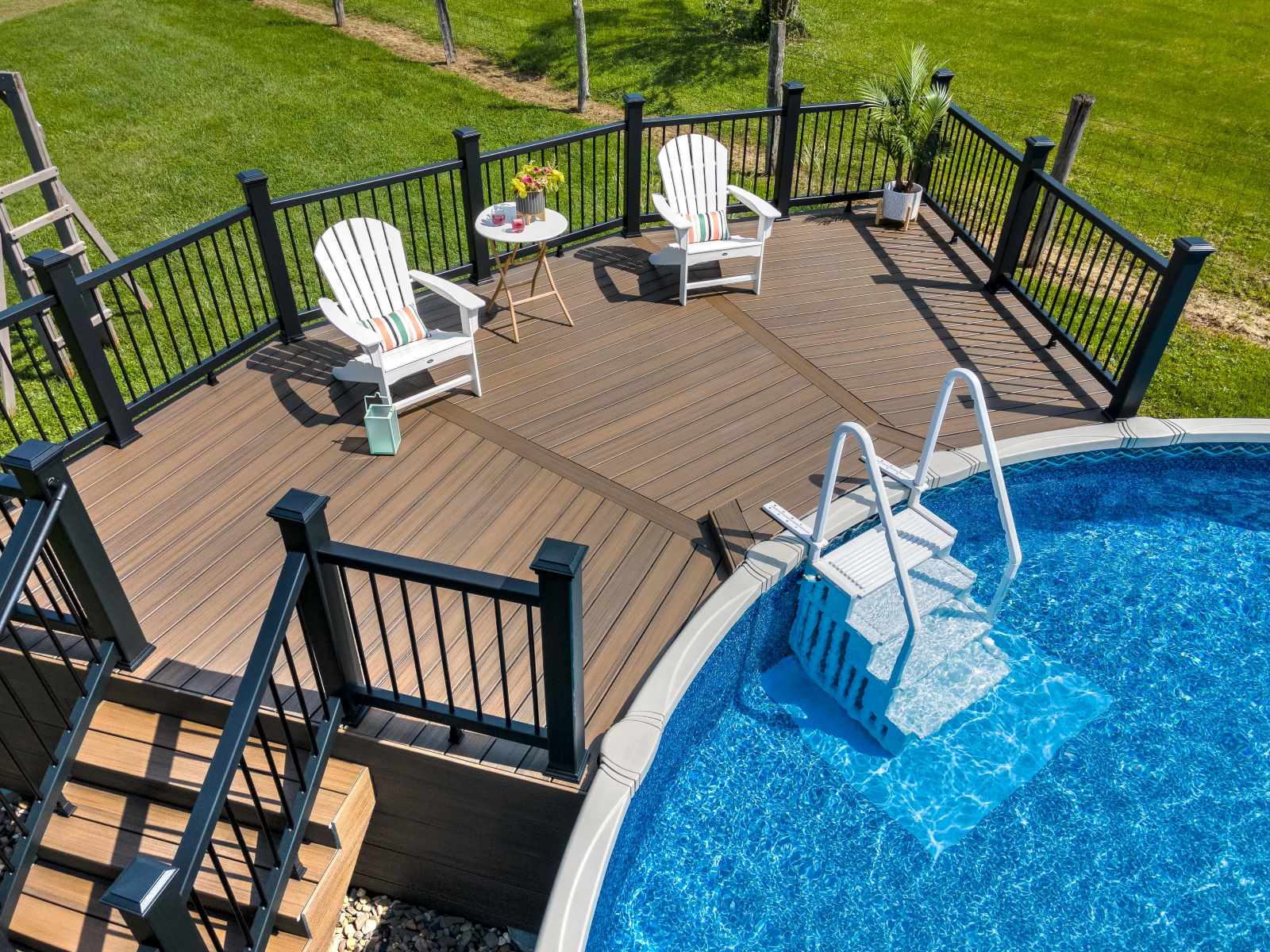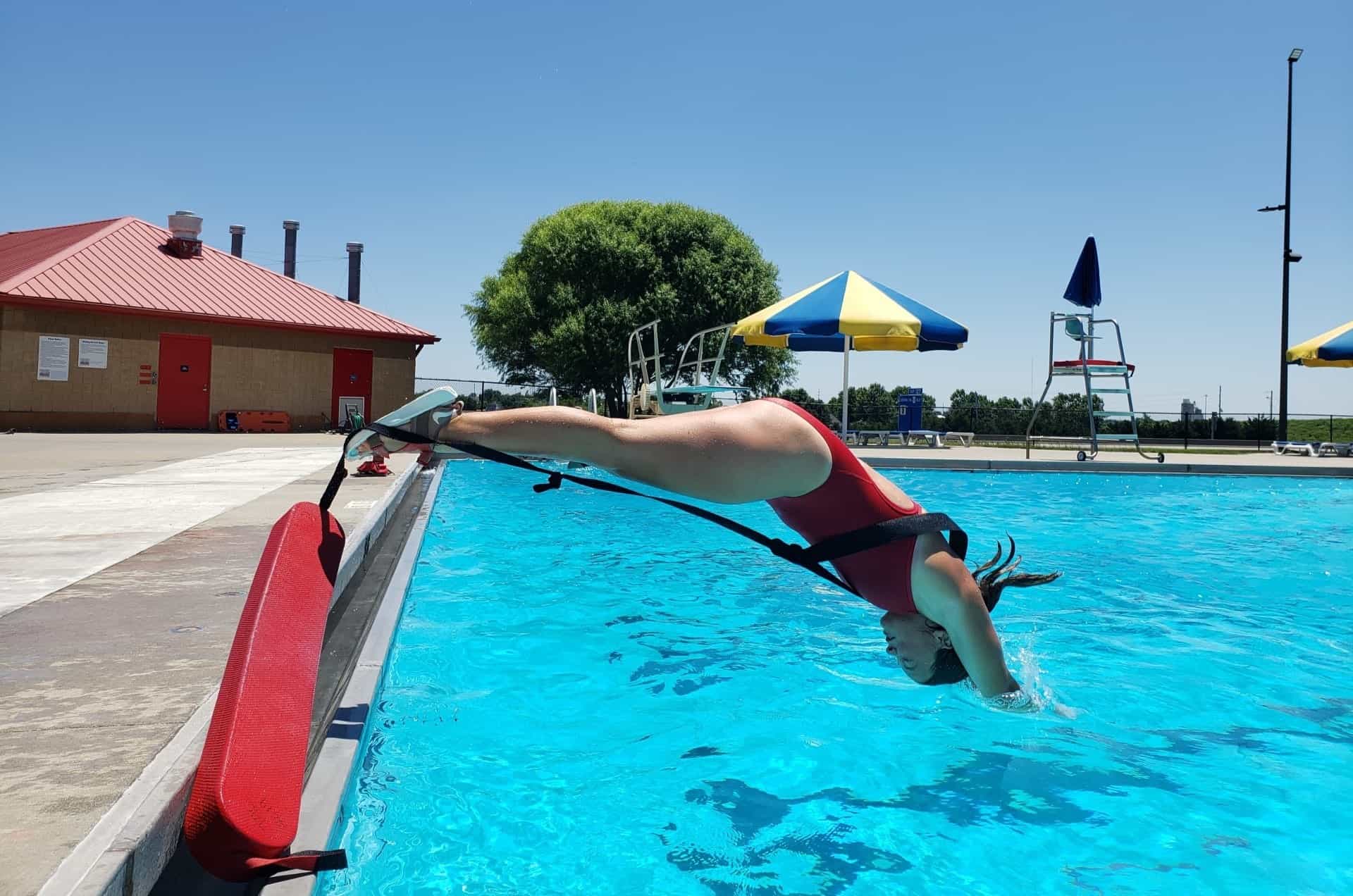Home>Gardening & Outdoor>Outdoor Recreation & Activities>How To Stay Warm In A Cold Swimming Pool


Outdoor Recreation & Activities
How To Stay Warm In A Cold Swimming Pool
Published: February 18, 2024
Discover effective tips for staying warm in a cold swimming pool. Enjoy outdoor recreation and activities without feeling the chill.
(Many of the links in this article redirect to a specific reviewed product. Your purchase of these products through affiliate links helps to generate commission for Storables.com, at no extra cost. Learn more)
Choosing the Right Swimwear
When it comes to swimming in a cold pool, choosing the right swimwear is crucial for maintaining warmth and comfort. Here's a comprehensive guide to selecting the ideal swimwear for cold water activities.
Read more: How To Stay Warm In A Hammock
1. Insulated Swimwear
Opt for swimwear specifically designed for cold water swimming. Look for insulated swimsuits made from neoprene or other thermal materials. These suits are designed to provide extra warmth by trapping a thin layer of water between the suit and the skin, which is then heated by the body.
2. Full-Body Coverage
Consider swimwear that offers full-body coverage, such as full-length wetsuits or rash guards paired with swim leggings. These options provide maximum protection against the cold water, minimizing heat loss and keeping your entire body insulated.
3. Tight-Fitting Design
Choose swimwear with a snug and tight-fitting design to reduce water circulation inside the suit. This helps retain body heat and prevents cold water from seeping in, keeping you warmer during your swim.
4. Layering
In extremely cold conditions, layering your swimwear can provide additional insulation. Pair a thermal swimsuit with a neoprene vest or jacket to create layers that effectively trap heat and keep you comfortable in chilly waters.
Read more: How To Stay Warm At An Outdoor Event
5. Swim Caps and Booties
Don't overlook the importance of accessories. Wear a swim cap to protect your head from heat loss and consider neoprene booties to keep your feet warm. These accessories can significantly contribute to maintaining your overall body temperature while swimming in cold water.
By carefully considering these factors when choosing your swimwear, you can ensure that you stay warm and comfortable during your cold water swimming sessions. Selecting the right swimwear not only enhances your experience but also promotes safety and well-being in challenging aquatic environments.
Key Takeaways:
- Choose insulated swimwear like neoprene suits for warmth in cold pools. Full-body coverage, tight-fitting design, layering, and accessories like swim caps and booties can keep you cozy and safe.
- Wetsuits and thermal swimwear provide insulation for cold water swimming. Keep moving in the water to generate heat, and use swim caps and earplugs for added warmth and protection.
Using a Wetsuit or Thermal Swimwear
When it comes to braving the chill of a cold swimming pool, utilizing a wetsuit or thermal swimwear can make a substantial difference in your comfort and overall experience. These specialized garments are designed to provide insulation and retain body heat, allowing you to enjoy your aquatic activities even in colder temperatures.
1. Wetsuits: A Shield Against the Cold
Wetsuits are crafted from neoprene, a durable and insulating material that effectively traps a thin layer of water between the suit and the skin. This layer of water is then heated by the body, creating a thermal barrier that helps maintain a comfortable temperature during your swim. Wetsuits come in various thicknesses, with thicker suits offering greater insulation for colder waters. The snug fit of a wetsuit prevents excessive water circulation, further enhancing its insulating properties.
2. Thermal Swimwear: Engineered for Warmth
Thermal swimwear is specifically designed to provide warmth and comfort in cold water conditions. These garments are constructed from advanced materials that offer superior insulation while allowing for freedom of movement. Thermal swimwear often features innovative designs that minimize water flow within the suit, effectively retaining body heat and shielding the swimmer from the cold.
Read more: How To Remove A Swimming Pool
3. Choosing the Right Option
When selecting between a wetsuit and thermal swimwear, consider the water temperature and the duration of your swim. For extended periods in very cold water, a wetsuit with appropriate thickness is recommended to ensure maximum insulation. Alternatively, thermal swimwear is suitable for milder cold conditions or shorter swimming sessions, providing flexibility and ease of movement.
4. Additional Considerations
It's essential to ensure a proper fit when choosing a wetsuit or thermal swimwear. A well-fitted garment will optimize its insulating properties and prevent water ingress, keeping you warmer throughout your swim. Additionally, proper care and maintenance of these specialized garments are crucial to preserve their effectiveness and longevity.
By incorporating a wetsuit or thermal swimwear into your cold water swimming routine, you can elevate your comfort and extend your aquatic pursuits into colder seasons. These purpose-built garments not only provide warmth but also contribute to safety and well-being, enabling you to fully embrace the invigorating experience of swimming in chilly waters.
Keeping Moving in the Water
Maintaining continuous movement while in the water is a fundamental strategy for staying warm during cold swimming sessions. When the body is in motion, it generates heat, which helps counteract the loss of warmth to the surrounding water. Here's a detailed exploration of the benefits and techniques for keeping active in the water to ward off the cold.
1. Enhanced Circulation and Heat Production
Engaging in physical activity while swimming stimulates blood circulation, promoting the efficient distribution of heat throughout the body. As the muscles work, they generate heat, which is then transferred to the bloodstream and distributed to vital organs and extremities. This continuous circulation of warm blood aids in maintaining a comfortable body temperature, mitigating the effects of the cold water.
Read more: How To Empty A Swimming Pool
2. Effective Stroke Techniques
Utilizing efficient stroke techniques not only propels the swimmer through the water but also contributes to heat generation. Freestyle, breaststroke, backstroke, and butterfly strokes all engage different muscle groups, fostering heat production and circulation. By focusing on proper form and technique, swimmers can optimize their movements to generate heat and sustain warmth during their aquatic endeavors.
3. Interval Training and Active Rest Periods
Incorporating interval training into swimming sessions can be particularly beneficial for combating the cold. Alternating between bursts of high-intensity swimming and active rest periods keeps the body engaged and continuously generating heat. During active rest periods, swimmers can perform light exercises such as treading water or gentle kicking to maintain movement and prevent a rapid decrease in body temperature.
4. Mental and Physical Engagement
Staying mentally and physically engaged while in the water is essential for sustaining warmth. Focusing on technique, breathing, and the surrounding environment can help swimmers remain attentive and active, preventing the onset of cold-induced discomfort. Additionally, maintaining a positive mindset and embracing the invigorating nature of cold water swimming can enhance the overall experience and motivation to keep moving.
5. Safety and Awareness
While prioritizing movement in the water, it's crucial for swimmers to prioritize safety and be mindful of their physical limits. Engaging in continuous movement should be balanced with self-awareness and the ability to recognize signs of fatigue or overexertion. By maintaining a steady pace and being attuned to the body's signals, swimmers can enjoy the benefits of movement while safeguarding their well-being.
By integrating these strategies and techniques, swimmers can effectively harness the power of movement to stay warm and comfortable in cold swimming environments. The combination of physical activity, proper technique, and mindfulness not only contributes to heat generation but also enhances the overall enjoyment and safety of cold water swimming experiences.
Read more: How To Cover A Swimming Pool
Using Swim Caps and Earplugs
In the realm of cold water swimming, the significance of utilizing swim caps and earplugs extends beyond mere accessories; they play a pivotal role in enhancing comfort, protection, and overall performance. Let's delve into the multifaceted benefits and practical considerations associated with incorporating swim caps and earplugs into your aquatic pursuits.
Swim Caps: A Shield Against Heat Loss
Swim caps serve as a valuable barrier against heat loss, particularly from the head, which is a primary area of heat dissipation in cold water. By donning a snug-fitting swim cap, swimmers can effectively reduce heat loss from the scalp, thereby maintaining a more stable body temperature during their aquatic endeavors. Additionally, swim caps help streamline the swimmer's hydrodynamics, minimizing drag and optimizing performance in the water.
Earplugs: Safeguarding Auditory Comfort
Earplugs are instrumental in safeguarding the delicate structures of the ears from the discomfort and potential health risks associated with prolonged exposure to cold water. They create a protective seal within the ear canal, preventing water from entering and causing discomfort or potential issues such as swimmer's ear. By maintaining auditory comfort and protecting against water ingress, earplugs contribute to a more enjoyable and sustainable cold water swimming experience.
Practical Considerations and Selection
When selecting swim caps and earplugs for cold water swimming, it's essential to prioritize functionality and fit. Opt for swim caps made from insulating materials such as silicone or latex, as these provide enhanced thermal protection. Ensure a snug yet comfortable fit to effectively minimize heat loss. Similarly, earplugs should offer a secure seal without causing discomfort, effectively preventing water entry while allowing for natural pressure equalization.
Read more: How To Clean A Swimming Pool
Comprehensive Protection and Comfort
By integrating swim caps and earplugs into your cold water swimming routine, you can benefit from comprehensive protection and enhanced comfort. These accessories not only contribute to maintaining a comfortable body temperature but also mitigate the potential discomfort and health risks associated with prolonged exposure to cold water. Embracing the combined advantages of swim caps and earplugs empowers swimmers to fully immerse themselves in the invigorating experience of cold water swimming while prioritizing their well-being and enjoyment.
Incorporating swim caps and earplugs into your cold water swimming regimen is a proactive step toward optimizing comfort, protection, and performance. By recognizing the valuable role of these accessories and selecting them thoughtfully, swimmers can elevate their aquatic pursuits and embrace the exhilarating experience of swimming in colder temperatures.
Using Hot Water Bottles or Heat Packs
In the realm of cold water activities, the utilization of hot water bottles or heat packs serves as a strategic and comforting approach to maintaining warmth and enhancing the overall cold water swimming experience. These simple yet effective tools offer targeted heat application, promoting thermal comfort and aiding in the regulation of body temperature during aquatic pursuits in chilly waters.
Targeted Heat Application
Hot water bottles and heat packs are designed to deliver localized warmth, making them particularly beneficial for addressing specific areas of the body that are susceptible to heat loss in cold water. By applying heat to key areas such as the lower back, abdomen, or extremities, swimmers can counteract the effects of the cold and sustain a more comfortable and regulated body temperature throughout their aquatic activities.
Flexibility and Mobility
One of the notable advantages of hot water bottles and heat packs is their versatility and portability. These compact and pliable heat sources can be easily maneuvered and secured to the body using adjustable wraps or neoprene sleeves, allowing swimmers to maintain freedom of movement while benefiting from targeted heat therapy. This flexibility enables individuals to customize their heat application based on their unique comfort preferences and thermal needs.
Read more: How To Tile A Swimming Pool
Pre- and Post-Swim Warmth
Incorporating hot water bottles or heat packs into pre-swim and post-swim routines can significantly enhance the overall cold water swimming experience. Prior to entering the water, the application of heat to the body can help pre-warm muscles and improve circulation, preparing swimmers for the initial immersion into cold water. Subsequently, post-swim use of hot water bottles or heat packs aids in promoting muscle relaxation and recovery, contributing to a more comfortable transition from the aquatic environment to dry land.
Safety and Considerations
When utilizing hot water bottles or heat packs for cold water swimming, it is essential to prioritize safety and proper usage. Select heat sources that are specifically designed for aquatic activities and adhere to recommended temperature and duration guidelines to prevent skin irritation or burns. Additionally, ensure that the heat application does not impede swimming movements or compromise water safety, maintaining a balance between warmth and aquatic mobility.
Elevating Comfort and Well-Being
By integrating hot water bottles or heat packs into cold water swimming routines, individuals can elevate their comfort and well-being, fostering a more enjoyable and sustainable experience in chilly aquatic environments. The targeted warmth provided by these heat sources not only contributes to thermal regulation but also promotes relaxation and muscle comfort, enabling swimmers to fully embrace the invigorating nature of cold water activities.
Incorporating hot water bottles or heat packs into cold water swimming routines is a proactive and practical approach to enhancing comfort and thermal regulation. By leveraging the benefits of targeted heat application, swimmers can optimize their cold water experiences and extend their aquatic pursuits into colder seasons with confidence and warmth.
Frequently Asked Questions about How To Stay Warm In A Cold Swimming Pool
Was this page helpful?
At Storables.com, we guarantee accurate and reliable information. Our content, validated by Expert Board Contributors, is crafted following stringent Editorial Policies. We're committed to providing you with well-researched, expert-backed insights for all your informational needs.










0 thoughts on “How To Stay Warm In A Cold Swimming Pool”